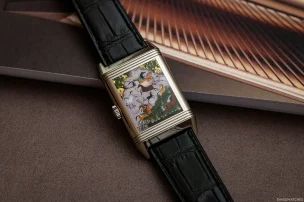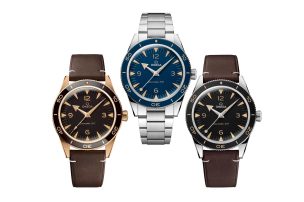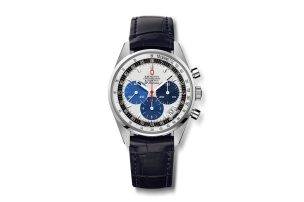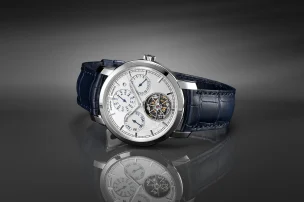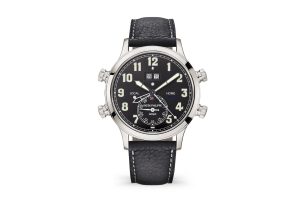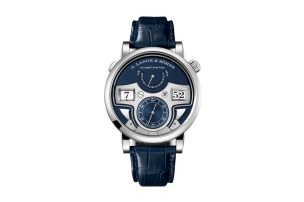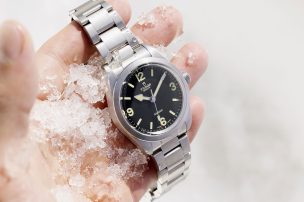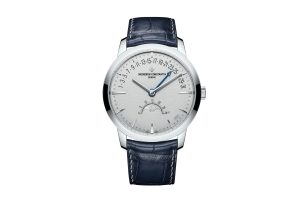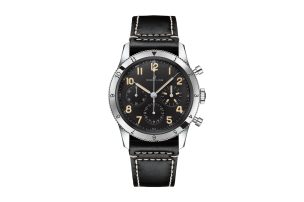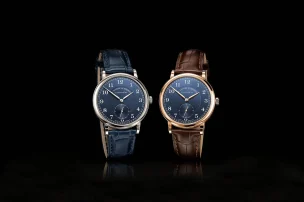
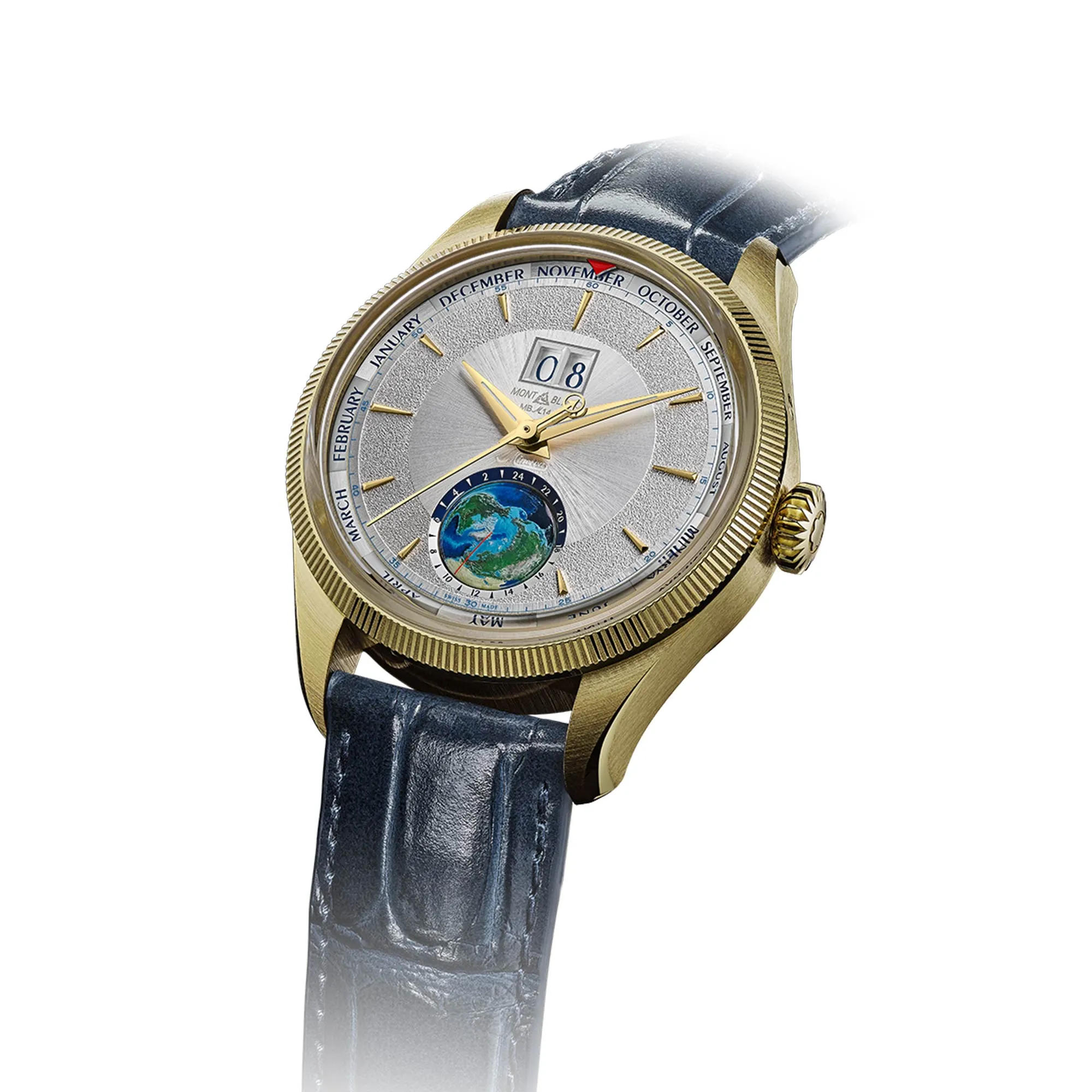
W&W 2025: Montblanc 1858 Geosphere Annual Calendar Limited Edition
The best of two spheres: Montblanc presents a new manual-winding Minerva movement
Montblanc and Minerva – the shared history of these two traditional brands does not go back very far. Montblanc, the leading Hamburg-based company for the finest writing utensils founded in 1906, only entered the watch business in 1997.
This makes it a real youngster in terms of timekeeping compared to the time-honoured Swiss Minerva manufacture. Its year of birth dates back to 1858, and it was one of the most important watch manufacturers in Switzerland at the end of the 19th and beginning of the 20th century, having been named after the Roman goddess of craftsmanship.
“I think that Minerva, together with Heuer, invested the most in technical innovations such as the stop function back then. To this day, Minerva epitomises the high, innovative and sporty art of watchmaking,” says Davide Cerrato, Managing Director Watch Division Montblanc from 2015 to 2021.
Montblanc and Minerva both belong to the Richemont Group today – Montblanc since 1993 and Minerva since 2006, although the former Minerva factory in Villeret has become part of Montblanc and is run under the euphonious name of Institut Minerva de Recherche en Haute Horlogerie (Minerva Institute for Research in Fine Watchmaking).
Here, mechanical movements of the highest calibre are produced with a very high level of vertical integration and a great deal of manufacturing expertise – “To a level where we manufacture our own hairsprings. This makes us one of the very few companies that still masters this step itself. Of course, we also assemble and test these movements,” says Nikolas Baretzki, Montblanc CEO from 2017 to 2024.
The speciality: each movement is made from start to finish by one and the same watchmaker. And so, for almost 20 years, the extraordinary expertise of both companies has merged to create exquisite timepieces such as the new 1858 Geosphere Annual Calendar Limited Edition.
1858 Geosphere Annual Calendar Limited Edition
Two versions are celebrating their premiere at Watches & Wonders 2025. They differ in terms of material: a stainless steel case with a white gold bezel for the version limited to 100 pieces and a 750 Lime Gold case with the same bezel for a further 30 versions. The indices and hands are matched in each case.
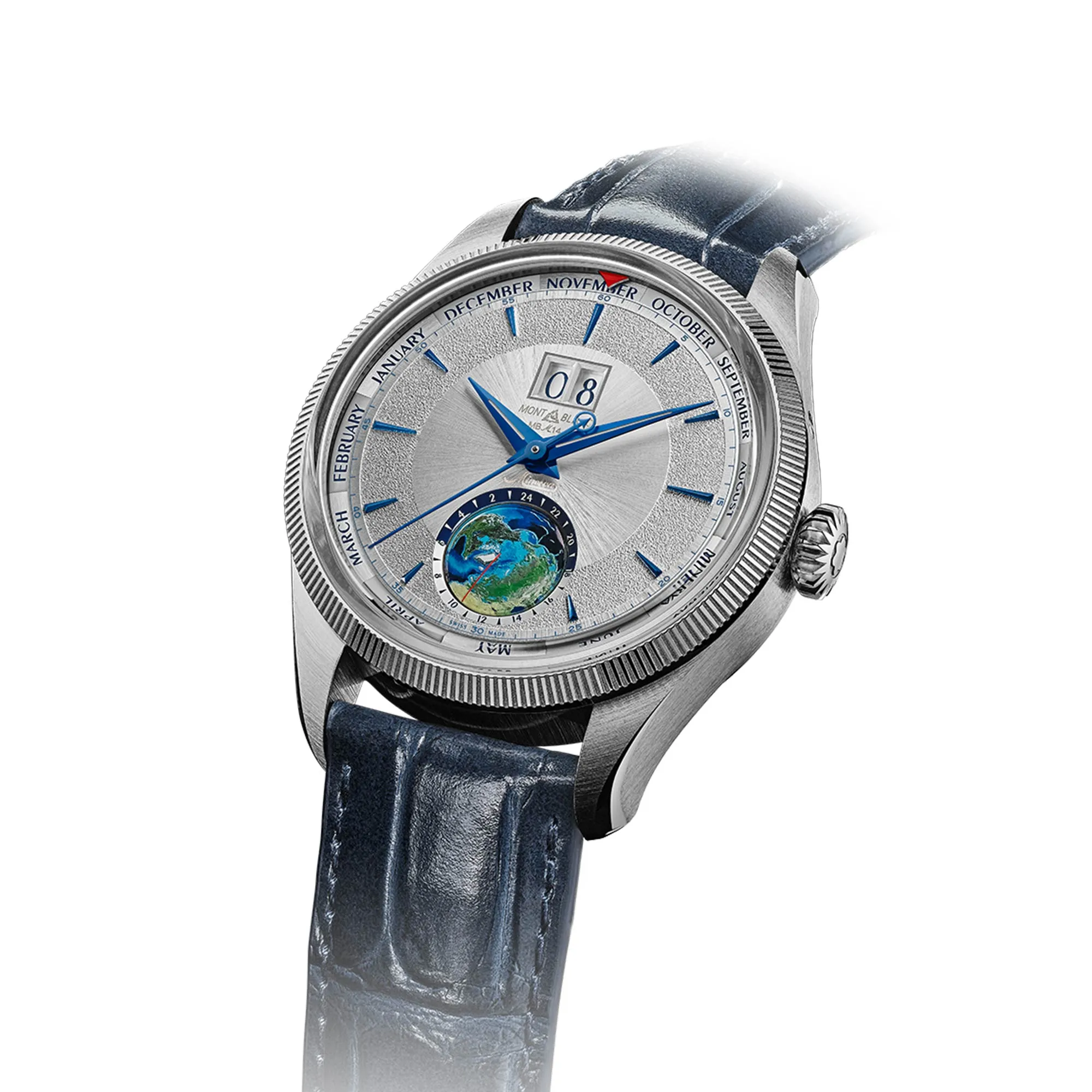
Both are housed in a 42-millimetre case with a completely new hand-wound movement from the movement manufacturer in Villeret. The MB M14.58 calibre offers the sophisticated complications big date, annual calendar and world time. It is the first of its kind in the Minerva portfolio.
The 365 components with their delicate interplay ensure precision and a power reserve of around 56 hours. This can be admired in all its splendour on the back of the watch thanks to the sapphire crystal case back. The individual parts are elaborately decorated by hand using traditional haute horlogerie techniques such as Côtes de Genève and the rare snail cut.
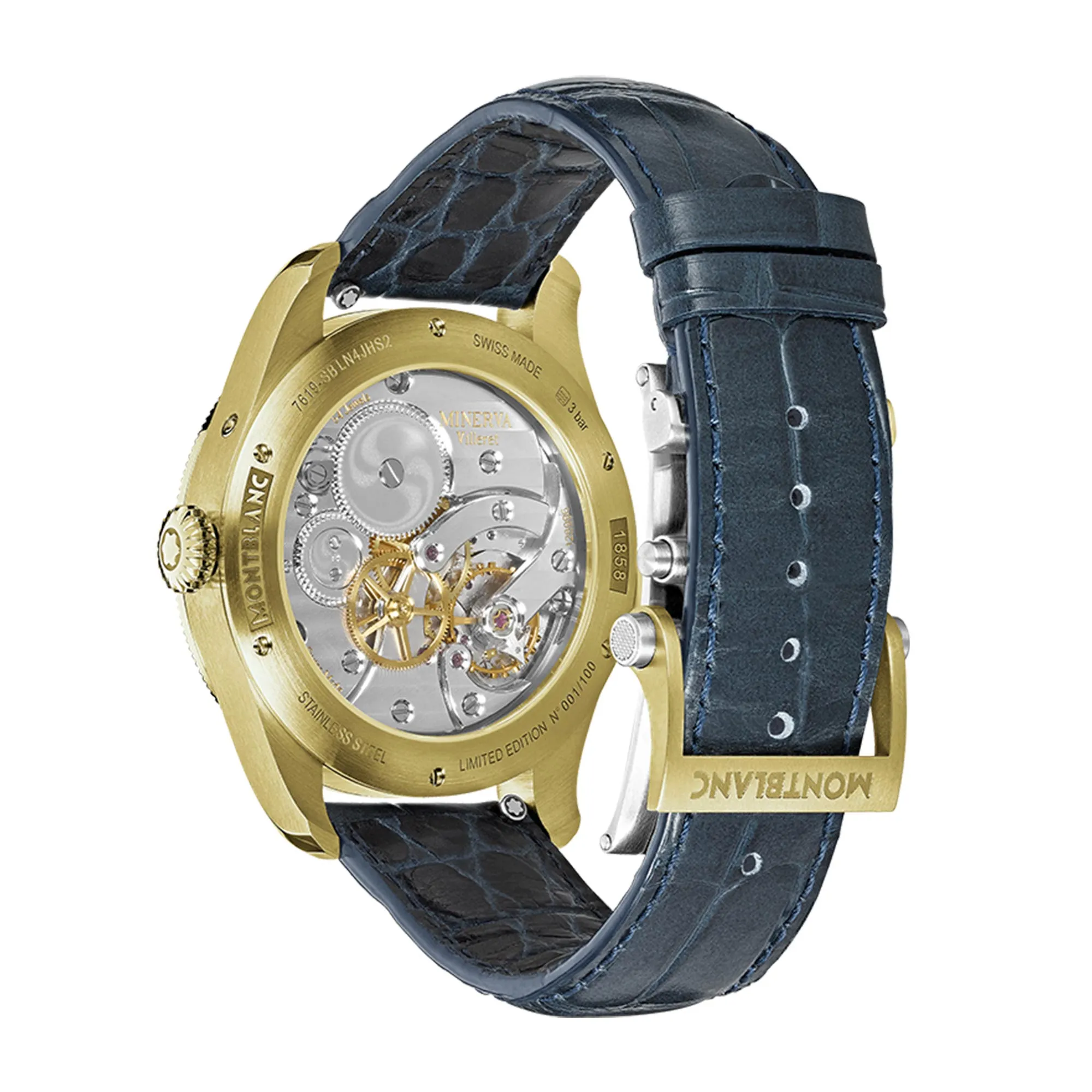
Stylish eye-catcher with a 1950s look
The front is in no way inferior in terms of craftsmanship and proves its eye-catching qualities in more ways than one.
The first thing that catches the eye of anyone looking at the 1858 Geosphere Annual Calendar Limited Edition is the three-dimensional rotating northern hemisphere. In addition to its visual qualities, it scores functionally with a day and night display as well as a Greenwich Mean Time display in the form of an orange-coloured line and a 24-hour scale.
The apparent glow of this hemisphere is due to the sapphire crystal used, which is hand-painted by an artisan over a period of four hours. Each piece is therefore unique. The southern hemisphere is also available on request. In addition to the ticking heart of the 1858 Geosphere Annual Calendar Limited Edition, the dial also embodies the aesthetics and excellence of the Minerva world of the 1950s.
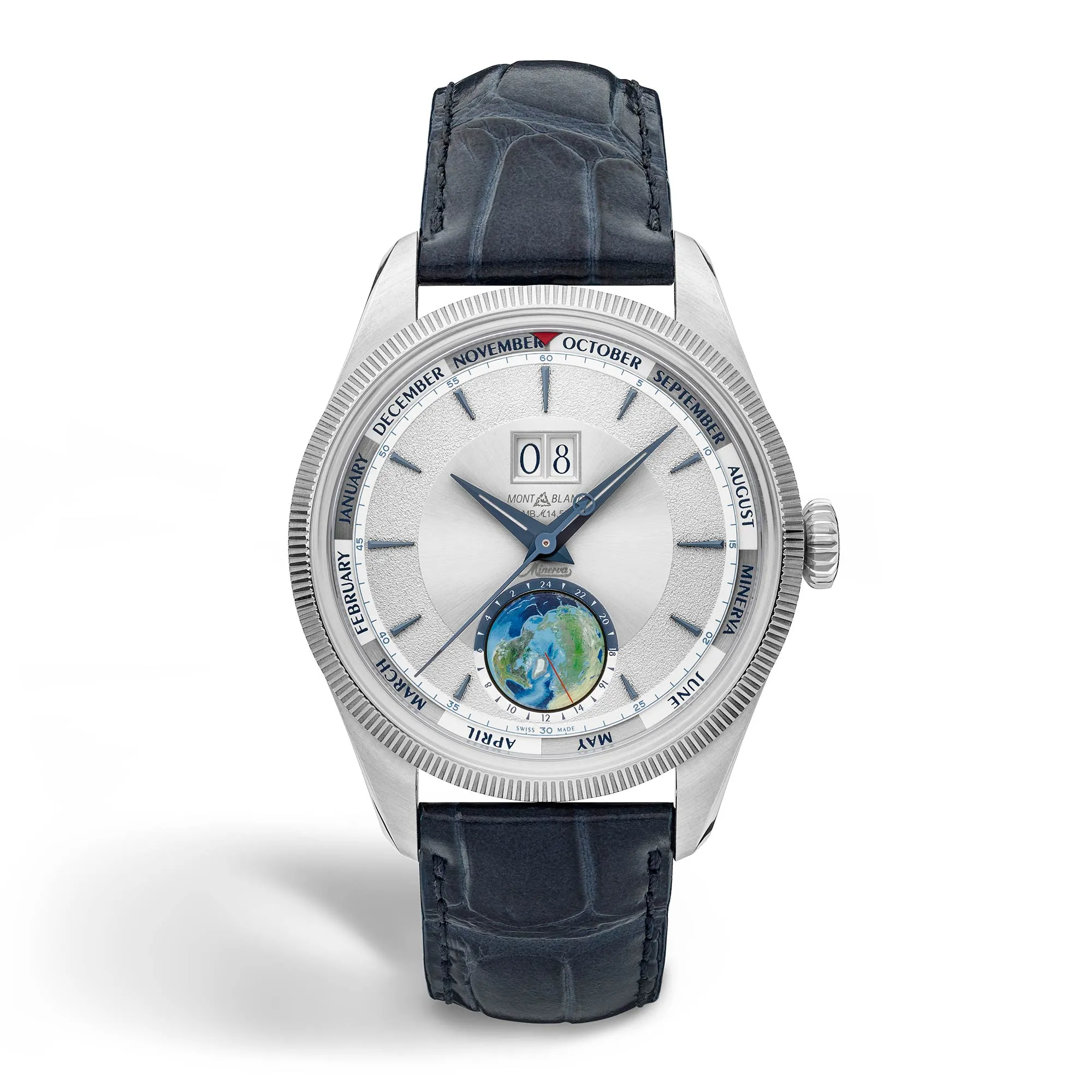
The silver-white grained sunburst dial is a tribute to the Minerva legacy, through which Montblanc quickly attained the status of a watch brand with genuine manufacturing expertise.
The months are arranged around this dial, whereby a keen eye immediately recognises an irregularity. July is replaced by the word Minerva; a discreet reference to the fact that Minerva was registered as a trademark on 30 July 1887.
The fixed bezel forms the outer edge of the watch head. Its design is inspired by the historic Minerva watches and the first fluted bezel, which was screwed onto an Oyster model by Rolex in 1926 to make it water and dust resistant.
Both versions are worn on an interchangeable strap made of blue calfskin with alligator embossing and a triple folding clasp with fine adjustment system.
The price for the Lime Gold version is €65,000, while the stainless steel version is available for €50,000.
